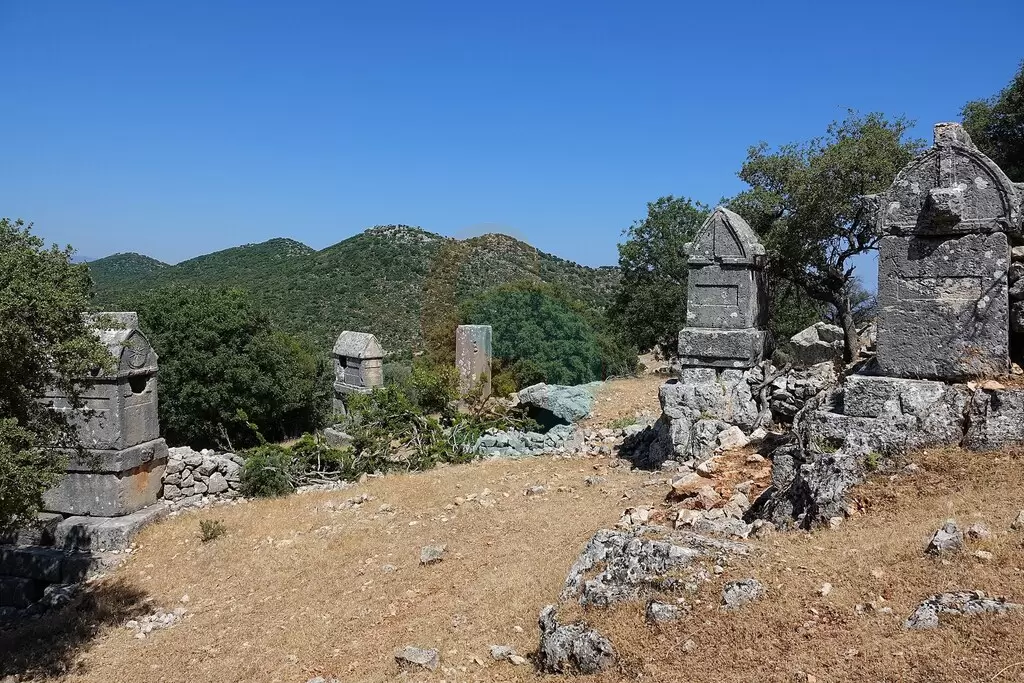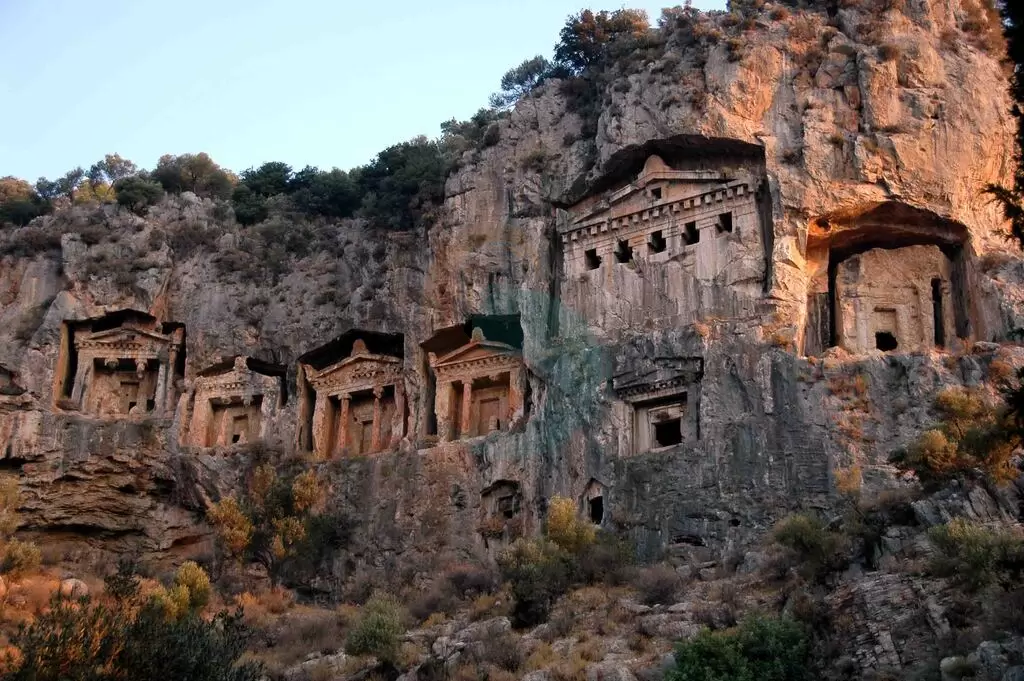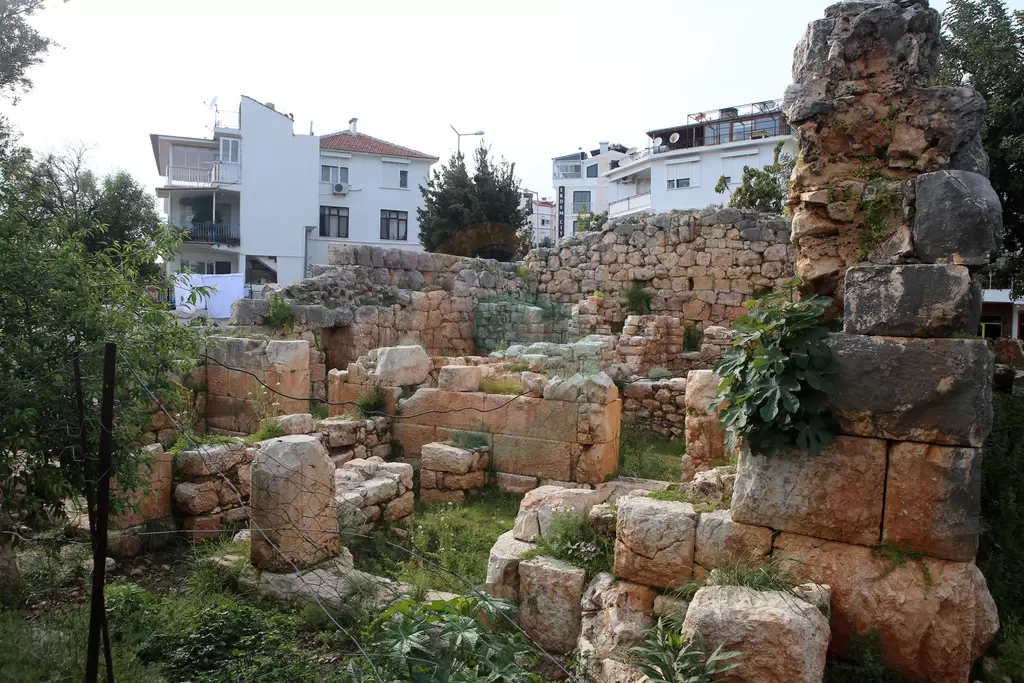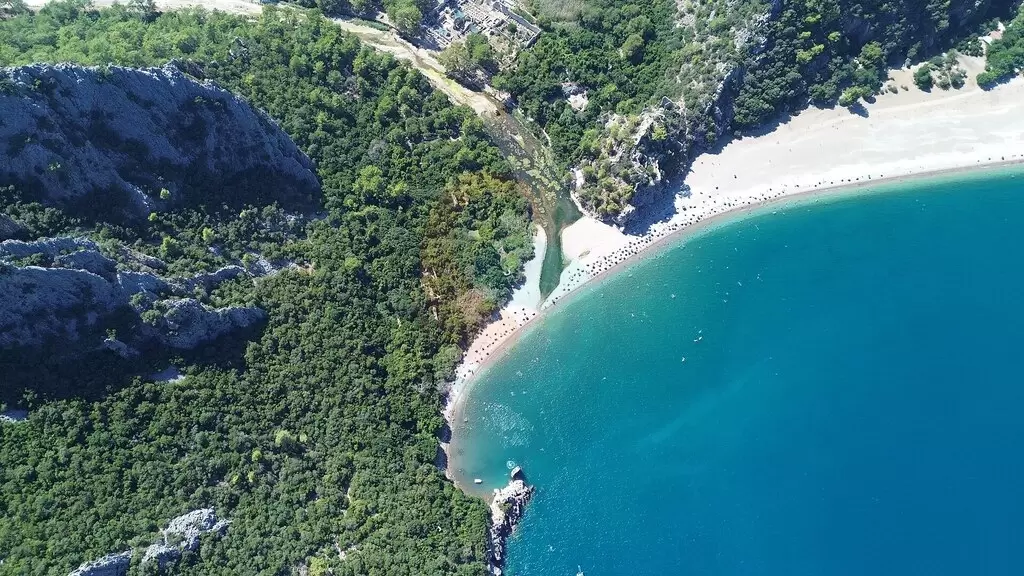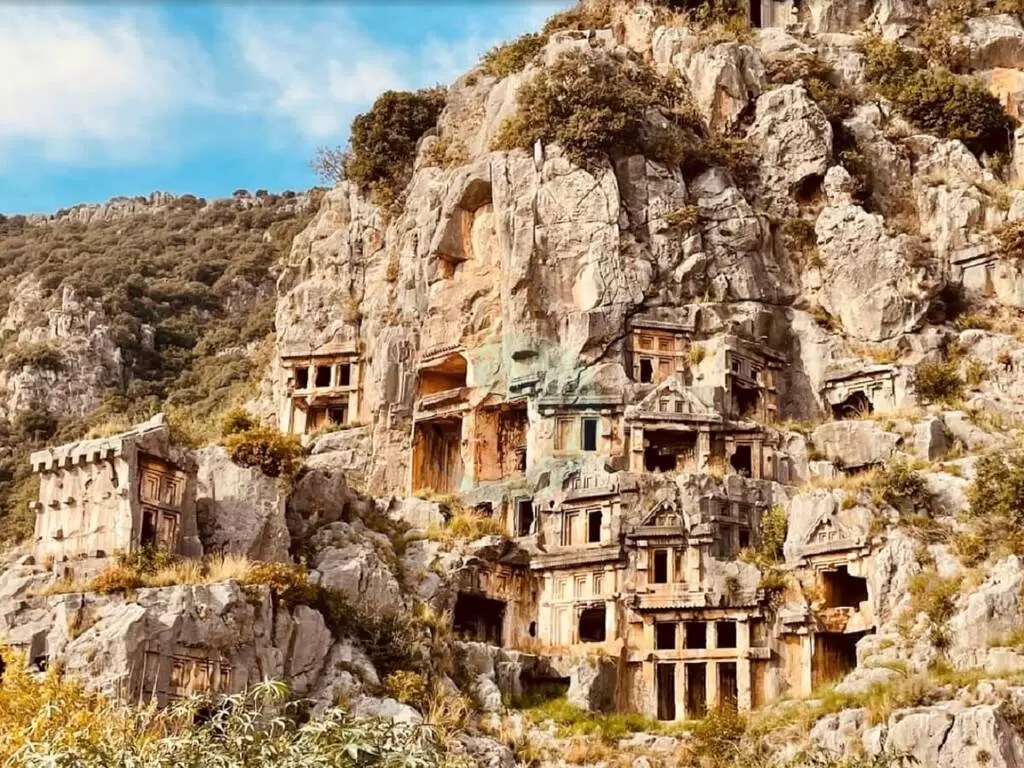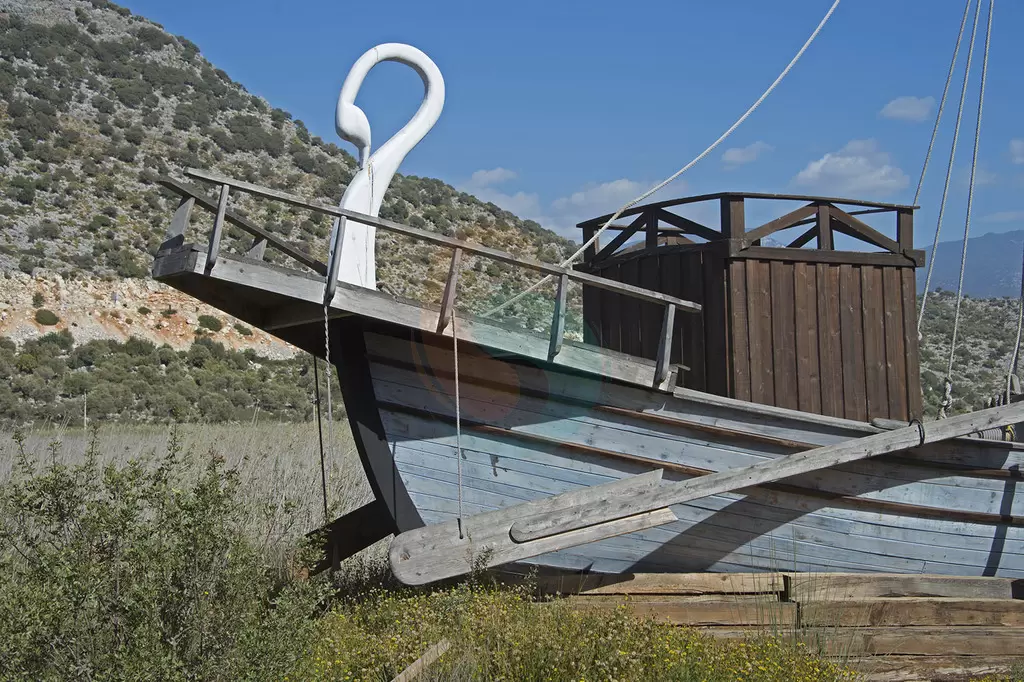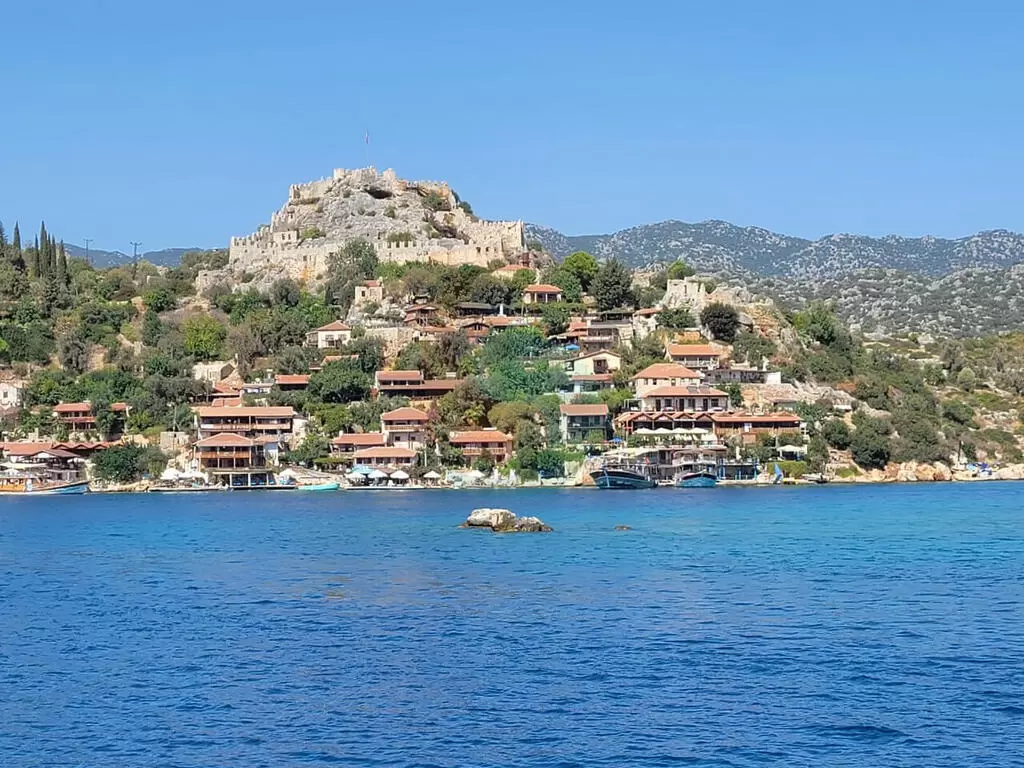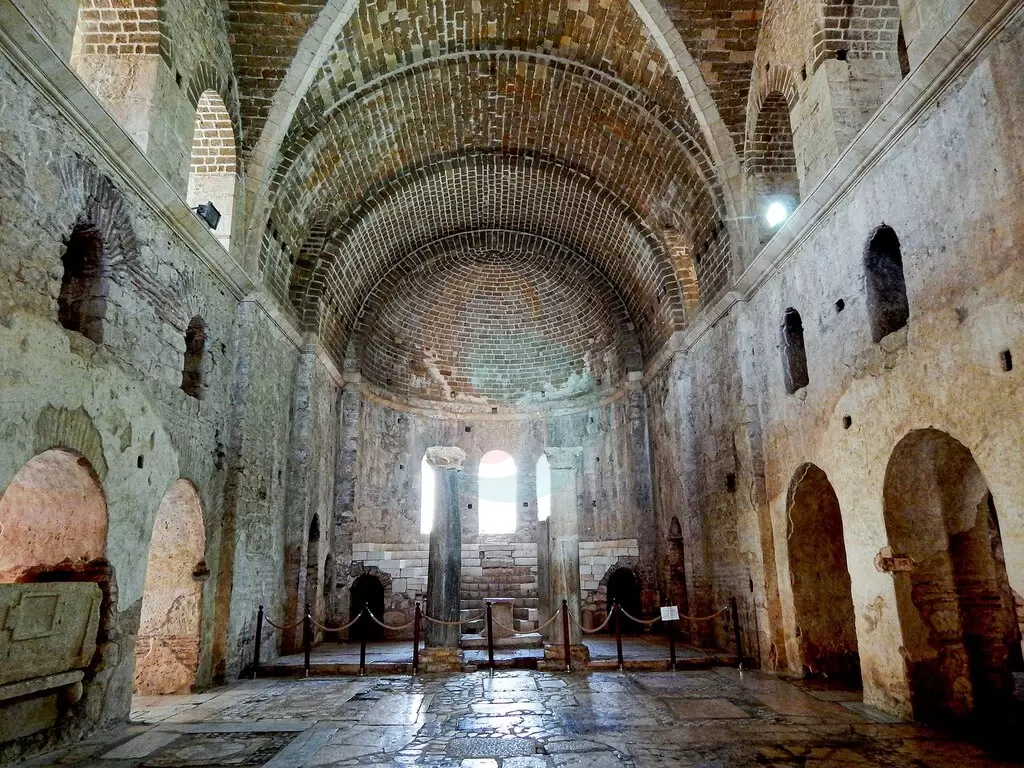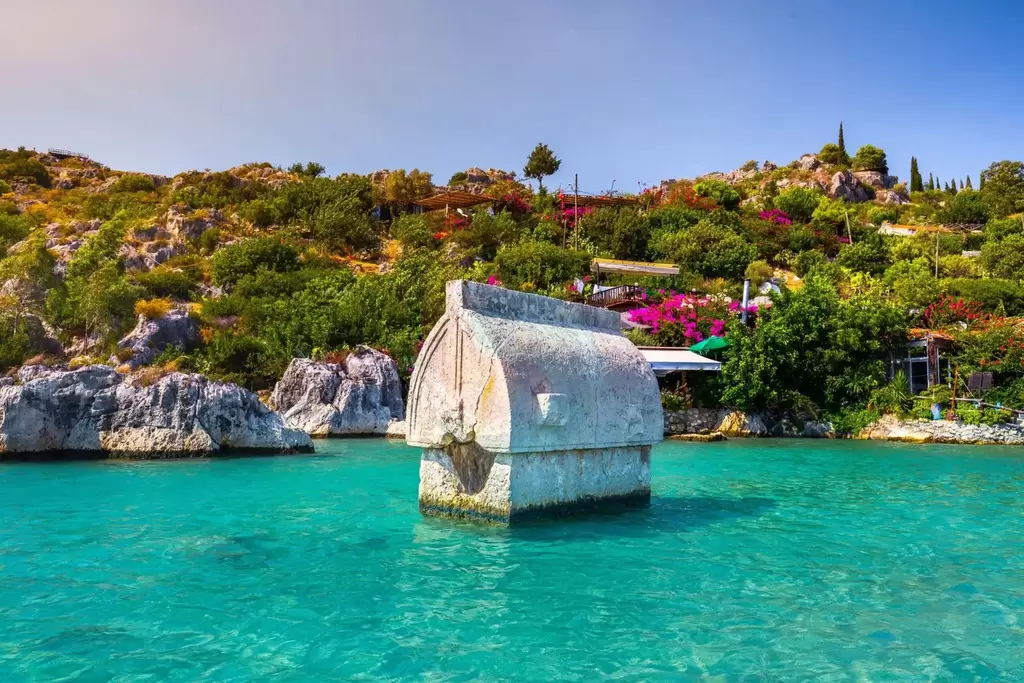Trip Time
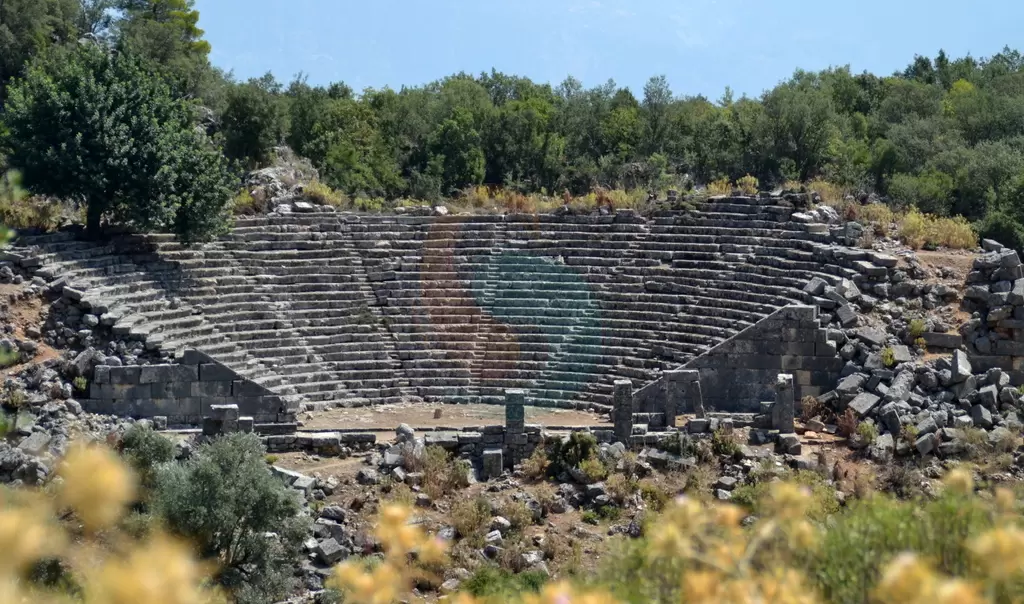
Step into the ancient world with a visit to Pinara, a remarkable archaeological site nestled in the Fethiye region. Explore the remnants of this once-thriving ancient city, known for its impressive rock-cut tombs, ancient theater, and well-preserved ruins. Wander through the ancient streets and marvel at the intricate carvings and architectural wonders that transport you back in time. Climb to the hilltop acropolis for panoramic views of the surrounding valleys and take a moment to soak in the serene atmosphere of this historic site. Pinara offers a unique opportunity to delve into the rich history and cultural heritage of the region. Discover the secrets of the past and let Pinara Ancient City ignite your imagination as you uncover the stories of this captivating ancient civilization.
Details
Pinara: A Testament to Lycian Culture and Civilization
Pinara Ancient City is a historical site located in southwestern Turkey, near the town of Minare in the Mugla Province. Here's some travel information about Pinara:
Location
Pinara is situated approximately 20 kilometers (12 miles) northeast of Fethiye, making it easily accessible from the popular tourist destinations in the region. It is nestled in a picturesque valley within the Taurus Mountains.
Historical Significance
Pinara is an ancient Lycian city that dates back to the 5th century BC. It was one of the six principal cities of the Lycian League and played a significant role in the region's history. The city flourished during the Hellenistic and Roman periods and was known for its religious and cultural importance.
Archaeological Site
Pinara boasts an extensive archaeological site that offers visitors a chance to explore the ruins of the ancient city. The site features well-preserved structures, including rock-cut tombs, a theater, a agora (marketplace), temples, a necropolis, and a stadium. The rock-cut tombs, in particular, are notable for their intricate carvings and architectural details.
Highlights
The theater of Pinara is one of the main highlights of the site. It is carved into the mountainside and offers a stunning backdrop of the surrounding landscape. The theater is well-preserved and provides insights into the ancient city's cultural and social life. The rock-cut tombs, with their elaborate designs and sizes, showcase the importance of funerary practices in the Lycian civilization.
Accessibility and Visiting Information
Pinara is accessible by road from Fethiye and other nearby towns. It's advisable to use private transportation, such as a car or taxi, as public transportation options to the site may be limited. The site is open to visitors during daylight hours, and an entrance fee may be required. It's recommended to check the specific opening hours and admission fees with local authorities or tourist information centers before your visit.
Guided Tours
To enhance your experience and gain a deeper understanding of the history and significance of Pinara, consider hiring a local guide or joining a guided tour. A knowledgeable guide can provide insights into the ancient city, its architecture, and the historical context, enriching your visit.
Weather Considerations
Pinara and its surrounding region experience a Mediterranean climate. Summers can be hot and dry, while winters are mild and rainy. It's advisable to consider the weather conditions during your visit and dress accordingly. It's recommended to bring sunscreen, a hat, and sufficient water, especially during the summer months.
Nearby Attractions
Pinara is located in a region rich in historical and natural attractions. While visiting Pinara, you can also explore other nearby sites such as the Ancient City of Xanthos, Letoon, Tlos, and Saklikent Gorge. The region offers opportunities for outdoor activities like hiking, exploring nature, and enjoying the scenic beauty of the area.
Pinara Ancient City is a captivating destination that provides a glimpse into the ancient Lycian civilization. It's an ideal visit for history enthusiasts, archaeology lovers, and those interested in exploring the cultural heritage of Turkey.
Map
F.A.Q.S
Pinara Ancient City is located in the southwestern region of Turkey, near the town of Xanthos in the province of Antalya. It is situated in the picturesque Xanthos Valley, surrounded by stunning natural beauty.
Pinara was an important city in ancient Lycia, dating back to the 5th century BCE. It was known for its strategic location and its role as a religious and administrative center in the region.
Visitors to Pinara can explore the well-preserved ruins of the ancient city, including the impressive rock-cut tombs, a theater, a agora (marketplace), temples, and various residential structures. The site is also known for its beautiful natural landscapes.
Yes, visitors can walk among the ruins of Pinara Ancient City and experience the historical ambiance. However, it's important to be respectful of the site and refrain from climbing or touching the ancient structures.
Yes, there is typically an entrance fee to visit Pinara Ancient City. The fee may vary depending on the specific regulations and policies of the site.
Yes, guided tours are often available for visitors who wish to learn more about the history and significance of Pinara Ancient City. Local guides can provide valuable insights and enhance the visitor experience.
It is generally allowed to bring food and drinks to Pinara Ancient City. However, it's important to dispose of any waste properly and respect the site's cleanliness.
Pinara Ancient City can be enjoyed by families with children. However, it's important to supervise children and ensure their safety while exploring the ruins, as some areas may have uneven terrain or steep slopes.
Due to its nature as an archaeological site, Pinara Ancient City may not have modern facilities such as restrooms. It is advisable to plan accordingly and use facilities before visiting the site.
Yes, photography is generally allowed at Pinara Ancient City. It's a wonderful opportunity to capture the beauty of the ancient ruins and the surrounding natural landscapes. However, it's always a good practice to respect any specific guidelines or restrictions regarding photography.
Categories
Related Tours
Advertisement

Advertisement


